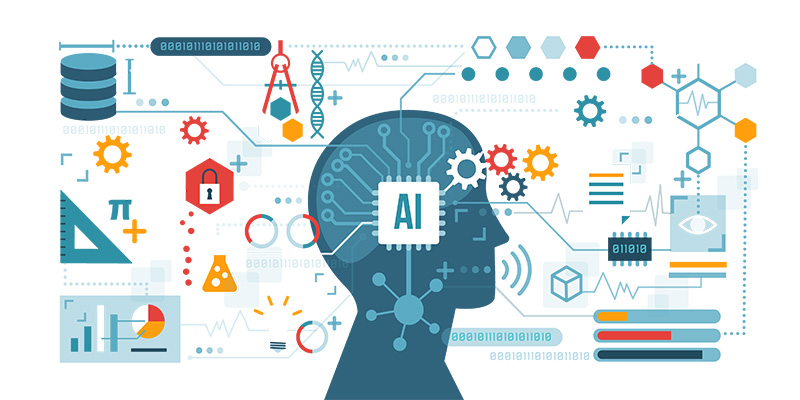Compliance and Risk Management have become critical considerations for firms of all sizes and industries in today’s fast-paced and highly regulated business environment. To operate ethically, legally, and safely, businesses must navigate a complicated web of rules, regulations, and industry standards. Failure to do so might result in significant financial penalties, reputational harm, and even legal ramifications. As a result, it’s no surprise that CEOs and decision-makers prioritize compliance and risk management.
Organizations have traditionally depended on human and semi-automated techniques to manage compliance and risk. These methods frequently involve substantial paperwork, spreadsheets, and scattered data sources, making it difficult to obtain a comprehensive picture of the compliance landscape. Furthermore, traditional approaches are time-consuming, prone to errors, and unprepared to deal with the increasing complexity of legislation and the ever-changing danger landscape.
Traditional Approaches’ Difficulties
Traditional compliance and risk management systems, while well-established, have significant drawbacks that limit their usefulness in today’s volatile business environment.
To begin with, these procedures are reactive in nature, relying on post-event research and audits to discover compliance violations or hazards. Significant damage may have already happened by the time problems are discovered, and restoration attempts can be costly and time-consuming.
Second, traditional techniques are frequently siloed, with various departments inside an organization managing their compliance and risk data. This lack of integration leads to fragmented insights and makes identifying cross-functional risks and compliance gaps difficult.
Furthermore, traditional techniques of manual data gathering and analysis are error-prone and resource-intensive. Human error and supervision can result in erroneous reporting and decision-making, exposing the organization to unwarranted risks.
The Role of AI in Improving Compliance
Artificial intelligence (AI) has enormous potential to revolutionize compliance and risk management. Process mining powered by AI, in particular, is developing as a game-changing technology that may overcome many of the drawbacks of old techniques.
AI systems can evaluate massive volumes of data at breakneck speed and precision. They can monitor and analyze transactions, contracts, and other compliance-related documents automatically in order to detect abnormalities and deviations from set norms. This proactive strategy allows firms to discover potential compliance issues in real-time, considerably lowering the chance of costly regulatory violations.
One of the most significant advantages of AI is its ability to combine data from several sources, so breaking down the silos that frequently present in traditional compliance processes. AI-powered solutions may combine data from several departments and systems to provide a comprehensive and uniform view of compliance and risk throughout the enterprise.
Furthermore, AI can improve predictive analytics by detecting new hazards based on past data and external sources. This enables firms to take proactive steps to mitigate hazards before they become serious problems. For example, AI can assist firms in identifying patterns of behavior connected with fraud or cybersecurity concerns, allowing them to reinforce their defenses.
Using AI to Reduce Risks

AI not only identifies dangers, but it also helps to assess and mitigate them in real time. Here are some ways AI can help with risk management:
- Fraud Detection: Artificial intelligence-powered algorithms can evaluate transaction data to find unusual patterns or behaviors that indicate fraud. Organizations can take fast action to avert financial losses by detecting suspicious actions in real-time.
- Cybersecurity: AI can monitor network traffic in real time and discover irregularities that may suggest a hack. Machine learning models can learn and adapt to new threats, enabling proactive cybersecurity risk protection.
- Compliance Monitoring: Artificial intelligence (AI) can automate the monitoring of regulatory changes and ensure that firms remain in compliance with the most recent laws and regulations. This eliminates the possibility of noncompliance penalties and reputational harm.
- Supply Chain Risk Management: AI can analyze supply chain data to identify and assess potential disruptions. This enables firms to establish contingency plans and reduce the effect of unanticipated disasters.
- Credit Risk Assessment: In the banking industry, AI-powered credit risk models can more precisely evaluate borrowers’ creditworthiness, lowering the chance of loan defaults.
AI’s capacity to handle massive volumes of data fast and accurately makes it a powerful risk mitigation tool, allowing firms to respond quickly to emerging threats and issues.
AI Implementation in Your Organization
The preceding success examples show the potential benefits of AI-powered process mining in compliance and risk management. If your company is thinking about incorporating AI into these crucial areas, here are some measures to take:
- Assessment: Start by evaluating your organization’s current compliance and risk management practices. Determine pain points, bottlenecks, and areas where AI can have the greatest impact.
- Data Readiness: Make sure your data infrastructure is prepared to support AI projects. Clean and structured data is required for AI algorithms to perform properly.
- Choose the Best AI Solutions: Evaluate AI suppliers and solutions that are a good fit for your organization’s needs. Scalability, integration capabilities, and industry-specific expertise are all important considerations.
- Pilot Projects: Begin with small-scale pilot projects to evaluate the usefulness of artificial intelligence in your compliance and risk management procedures. These pilots should be used to fine-tune the AI algorithms and procedures.
- Employee Training: Invest in training and upskilling your personnel so that they can properly use AI technologies. Employees should grasp how artificial intelligence augments their tasks and responsibilities.
- Continuous Monitoring and Improvement: To remain effective, AI models require ongoing monitoring and adjustment. Implement processes for assessing and improving AI-driven compliance and risk management on an ongoing basis.
The Advantages of AI-Powered Compliance and Risk Management

Adoption of AI-powered process mining in compliance and risk management provides numerous compelling advantages:
- Increased Accuracy: AI algorithms can evaluate large volumes of data with high precision, decreasing the possibility of human error in compliance monitoring and risk assessment.
- Productivity: Automating regular operations allows staff to focus on higher-value activities, enhancing overall efficiency and productivity.
- Real-Time Insights: Artificial intelligence (AI) helps firms to discover compliance infractions and developing hazards in real-time, enabling for quick intervention and mitigation.
- Cost-Effectiveness: While AI installation requires an initial investment, the long-term cost savings in terms of decreased compliance fines, operational efficiencies, and risk reduction can be significant.
- Improved Decision-Making: AI gives data-driven insights and predictive analytics to decision-makers, allowing for better informed and proactive decision-making.
Considerations and Obstacles
While the benefits of artificial intelligence (AI) in compliance and risk management are apparent, enterprises must also handle many obstacles and considerations:
- Data Privacy and Security: Managing sensitive compliance and risk data necessitates stringent data privacy and security safeguards to prevent breaches and unauthorized access.
- Ethical Concerns: The employment of AI in decision-making might pose ethical concerns, notably in terms of prejudice and fairness. Organizations must put ethical AI concepts and procedures in place.
- Regulatory Compliance: Using AI in compliance processes should not result in noncompliance with regulatory requirements. Organizations must guarantee that their AI solutions comply with industry norms.
- Change Management: Employees may be resistive to AI implementation. Addressing workforce concerns requires effective change management and transparent communication.
Conclusion
Finally, AI-powered process mining has the potential to transform compliance and risk management in today’s business environment. It allows businesses to transition from reactive, manual procedures to proactive, data-driven techniques that improve accuracy, efficiency, and cost-effectiveness. While there are obstacles to overcome and issues to solve, the revolutionary potential of AI in these important areas cannot be underestimated. Adopting AI-driven compliance and risk management is no longer an option for enterprises seeking to succeed in a fast changing regulatory and risk landscape. They may ensure compliance, resilience, and competitiveness in an increasingly complicated corporate environment by doing so.



